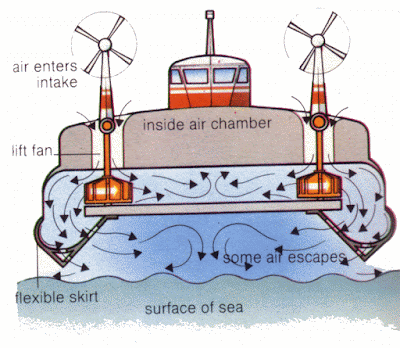Introduction
Howercraft is like a miracle machine ,it can works on water as well as land.
HOW TO MAKE A HOVERCRAFT
The idea of making a Hovercraft dates back to 1716 when Emmanual Swedenborg recorded a design, but it was short lived. In 1870, Sir John Thornycroft filled patents involving air lubricated hulls. And it was in 1959 a hovercraft was built, by Christopher Sydney Cockerell by discovering the Momentum Curtain theory. Hover craft also called Air cushion vehicle (ACV) travels on any kind of flat surface. It is supported by a cushion of pressurized air.
Design
- Can be powered by one or more engines
- Small crafts have a single engine with the drive split through a gear box
- Usually one engine drives the fan responsible for lifting the vehicle
- The other forces air from
Working
Two main principles:
1) Lift
2) Propulsion
- A skirt is required to quarantine airflow
- No contact with ground hence friction is eliminated
- The shape of the body affects stability
- All parts are essential for proper working
Parts
1) Lifting fan: Usually a centrifugal fan is preferred. When rotated air is sucked into the center hole, it is coupled via a gearbox and connected to the engine
2) Thrust propellers: An aircraft type propeller with variable type pitch blades. Diameter ranges from nine feet to nineteen feet. In bigger crafts the propellers are rotated while in smaller ones, rudders are used.
3) Skirt: Flexible strip which is fitted below the bottom edges of the plenum chamber. Skirt design is the most sensitive design parameter as it protects the craft and helps to lift it even higher.
In theory hovercrafts are simple machines but a plethora of problems exist to make a functioning hovercraft. The plans as well as the design must be flawless. To build a hovercraft one must be well aware of the demands of construction. Only then can one design a hovercraft.
Uses : In transport.
Reference video : https://youtu.be/1OMSdA4-Gn4

No comments:
Post a Comment